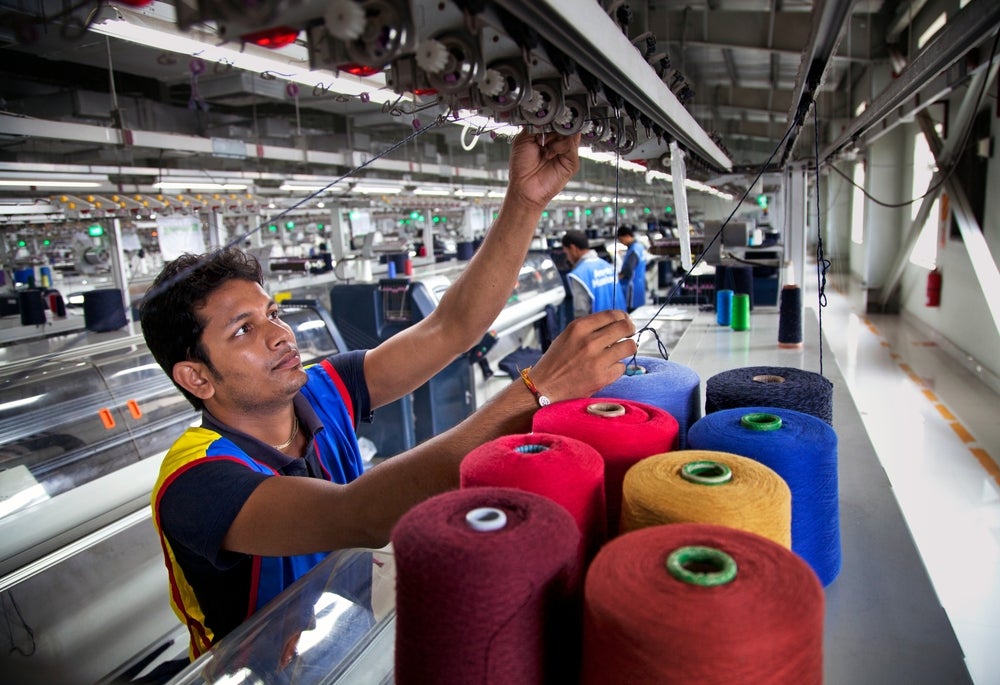
The discussions about fairer prices for the Bangladesh apparel and textile industry took place during a session titled: “Towards a US$100bn Apparel and Textile Sector: Leveraging Sustainability, Competitiveness and Investment Opportunities,” which took place at the Bangladesh Business Summit 2023 on 12 March.
According to local newspaper, The Daily Star, the session’s panellists argued the improvements Bangladesh has made in terms of quality, product diversity and compliance require international apparel buyers to offer fairer and more ethical prices.
The panellists, which included Bangladesh Garment Manufacturers and Exporters Association (BGMEA) president, Faruque Hassan, and Bangladesh Knitwear Manufacturers and Exporters Association (BKMEA), Mohammed Hatem, claimed that international buyers and brands consistently pay lower than the global average to garment suppliers in Bangladesh.
Hassan told Just Style exclusively: “With exemplary progress in the areas of workplace safety and environmental sustainability, Bangladesh has positioned itself a preferred apparel sourcing choice for global buyers.
He explained that Bangladeshi garment factories have made huge investment in upgrading safety while increasingly investing money to make production sustainable.
He said: “The industry is taking a lot of initiatives to ensure workers’ rights and welfare. Moreover, the rise in prices of yarn, chemicals and other raw materials in the global supply chain have increased production costs in garment manufacturing. Besides, production cost has gone up due to increase in interest rate along with energy shortage and price hike.”
He continued: “It’s good to see our achievements being appreciated but prices offered by buyers don’t reflect that. Buyers need to be more rational in their pricing and buying practices in order to build a more resilient and sustainable supply chain. It will not only benefit the suppliers but also the workers employed in the industry. Fair prices would enable factories to make more investment in sustainability and workers’ wellbeing.”
Meanwhile, The Daily Star quoted Hatem as saying: “Buyers hardly talk about the topic of fair product prices,” and also explained that Hassan added the country’s garment sector intends to be a pioneer in environmentally friendly manufacturing and is gearing up for its next growth phase.
The BKMEA had not responded to Just Style’s request for comment at the time of going to press.
Textile and Jute Minister Golam Dastagir Gazi stated: “Our textile sector has achieved international standards in regards to working environment, fire safety, building safety and others. But due to the Covid pandemic, like many countries we are now facing some challenging tasks ahead.”
Hassan said at the time: “The Bangladesh apparel industry has made significant progress in the last decade. As well improvements in health and safety, steady progress has been made in sustainability. With Made in Bangladesh Week, we are inviting the world to witness the progress and play a part in discussions which will continue to drive improvement across the whole industry.”
In an exclusive interview with Hassan at Made in Bangladesh Week 2022, which took place the same month, he explained the main intention of the gathering was to demonstrate Bangladesh’s capabilities and get rid of the outdated image that its manufacturers can only produce ‘fast fashion’.
He was also keen to share that Bangladesh has the highest number of green factories and in fact eight of the world’s top 10 green factories.
Click here to read Just Style’s part one and two analysis from Made in Bangladesh Week.



